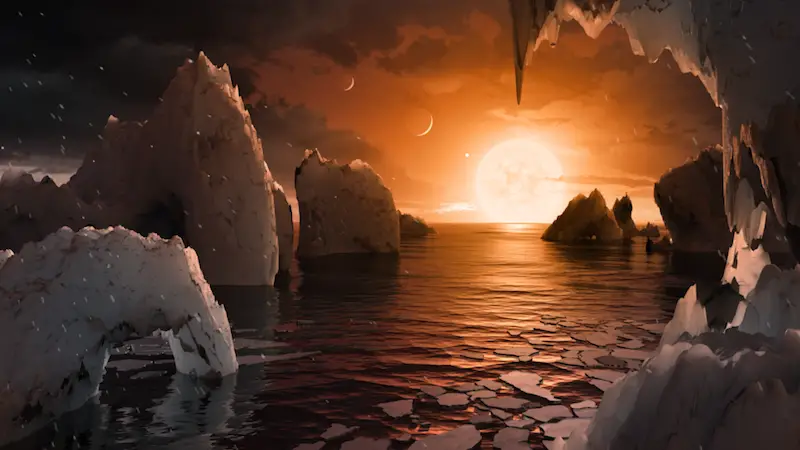NASA has announced the discovery of a new solar system containing seven Earth-sized planets orbiting around a single star, all of which appear to be capable of containing liquid water, the key to supporting life as we know it.
The discovery sets the record for the largest number of potentially habitable planets around a single star in a solar system outside of our own.
Three of the planets appear more likely than the others to contain water. They orbit in the “habitable zone,” the area that is the right distance from the star to be the most likely to have the necessary conditions for containing liquid water.
This exoplanet system is called TRAPPIST-1, named for The Transiting Planets and Planetesimals Small Telescope (TRAPPIST) in Chile.
In – scientists believe it could be an icy, “snowball-like” world, but further observations are needed.
Unlike our sun, the star in the TRAPPIST-1 system is cool enough that liquid water could be present on planets orbiting very close to it, closer than what we find in our solar system.
All seven of the planets are closer in their orbit to their host start than Mercury is to our sun, and the planets are very close to one another. This means that if a person was were standing on the surface of one of the planets, he could potentially see geological features or clouds of native worlds which would sometimes appear to be larger than the moon in our Earth’s sky.
The image below is an artist’s rendition of what this scene on the surface of one of the planets might look like:
“This discovery could be a significant piece in the puzzle of finding habitable environments, places that are conducive to life,” said Thomas Zurbuchen, associate administrator of the agency’s Science Mission Directorate in Washington. “Answering the question ‘are we alone?’ is a top science priority and finding so many planets like these for the first time in the habitable zone is a remarkable step forward toward that goal.”



